Homeopathy for Plants and Pests
Natural solutions to improve the health of soil and plants of all types, and to get rid of weeds, insects and animal pests.
As the time for frost passes in most parts of the US (although the forecast is calling for snow in the Colorado mountains tomorrow!)— and many of you have been in full Spring for months already— I feel inspired to share my favorite homeopathic remedies for plant care, as well as some creative and effective techniques for naturally keeping pests away. This post is an interlude in the Obstacles to Cure series, which will resume next time.
A reminder before we begin— you can search any document on your computer, and any page on the internet, including this one, by typing Command+F (Apple products) or Control+F (PCs).
A little window will pop up where you can type any word you want to search for. For instance try ‘fly’, ‘flies’, or ‘white flies’ (one at a time) to easily find every instance in this article where those words appear.
(In the little pop-up window it will tell you how many instances there are of the word, and you can use the arrows to jump from one to the next. This means that you can use all of the following information as a future resource without having to read through it all each time you are looking for something!)
Overall, when I first began to use homeopathy for plants, I can now see that I tried too hard, tried to be too smart about it, put too much research into finding the perfect, specific homeopathic remedy for each situation. And I did not get great results.
Eventually, I had a potted plant that was dying, and I decided to pretty much dump any homeopathic remedy on it, as a testing ground, to help me learn more in a low stakes situation.
Whenever it was time to refill or replace a wet dose bottle of some homeopathic remedy or combo that someone in the household was using, I would fill the empty bottle with water (which still had residual remedy in it) and would dump that water over the plant. And I casually observed the results.
Plants respond quite quickly to homeopathy, and in the following days I could note whether the plant perked up, nothing happened, or if it didn’t like it. Mostly it was the first two— perked up or nothing obvious. (Howver, no clear immediate effects doesn’t mean it isn’t helpful in any way— of course we won’t always know after just one dose and a few days.)
One time I put residual Aconitum Napelles 10M on the plant. When I passed by it later in the day, it had completely drooped over, and the soil was suddenly bone dry, as if it had sucked all the water out of it from the shock of the too-high potency. However, with watering and a break from remedies it was fine and stood back up again.
It also didn’t like Strontium Carbonicum 200C. It looked offended after I gave it that one. I do recall it very much liked Rhus Tox 30 and 200. One of this plant’s issues was a mildew that would start to take over the leaves, and the Rhus Tox was helpful, but not curative.
In the end, I decided the plant wasn’t going to make a full recovery. (Since then I have tried the same plant in the same area, and it just doesn’t like it. Everything else does well there. Sometimes the soil, amount of sun, or just general climate aren’t going to be optimal.)
This experiment opened me up to a lot more confidence and flexibility in working with homeopathy and plants. Nothing I did killed it. And when I gave up on it the plant was still in better shape than when I had began, even if not thriving.
By the way, I still do this, putting the residuals of wet doses on my potted plants. All, except that one have flourished, and with so little effort.
I have never been particularly plant-oriented, though I do like to have them around. The photos above show what some of my potted plants look like today. (I wish I had ‘before photos’ for you, as these were all once small, just doing ‘fine’, or even struggling— nowhere near as robust as they are now.)
From all of my experimenting and reading, I can now share some top homeopathic remedies for plants— homeopathy that they ALL seem to like. Later on I will include more specific information related to plant diseases, pests and so forth.
Although I still use the random approach more often with my indoor potted plants— because they are within easy reach— outdoors I give our trees targeted doses a few times a year. Over the past few years the entire landscape of our approximately one acre property has become much more vibrantly healthy and beautiful.
Homeopathy for Plants— Let’s Start With The Easy Approach
The following homeopathic remedies are just about all that one would need to care for most plants. Sure, there are specific cases, when dealing with diseases or pests, that might call for something more. But in general you can start here.
AND, in addition to any specific remedies I might give a plant, I would STILL incorporate the following top homeopathic medicines for plants.
Dosing—
Indoor plants require very little homeopathy applied in a little water, as I shared above.
Outdoors I put 3-5 pellets of each homeopathic medicine that I want to use into my three gallon watering can. I let the pellets dissolve and water the plant(s), also putting some on the bark and leaves and any wounded spots directly.
If it’s a large tree that needs a lot of help, it might get the whole three gallons. If I’m just providing some general support, one can might dose 3-5 smaller plants or trees.
I think it is a big mistake to get overly precise with plants. Just put some pellets in some water and give it to the plant. You’ll get much farther doing this than by NOT doing anything because you are afraid. You will not kill anything using these methods (in fact you will find the opposite). Over or under-watering a plant, keeping it in the wrong location, without enough sun, or with too much direct sun, will cause far more problems than whether you use 3 or 5 or 10 pellets or a 6C or 30C (and which won’t cause any issues at all).
Arnica for Plants
Potency: 3X to 200C
I probably use 6C and 30C the most, because I have the most of these common potencies on hand. (Packs of Arnica 30C can be extremely inexpensive to buy.)
Anytime I plant a new plant, transplant an existing plant, cut a plant, or a plant gets bruised, torn or damaged in any way, Arnica gets applied.
Also, remember the adage ‘when in doubt Arnica’, which applies to all life forms and is generally a good place to start with any plant issue.
Here’s an example of the power of Arnica for healing plants. This excerpt is from the book Homeopathy for Plants by Christiane Maute:
‘The second "Arnica miracle" took place in my sister's garden. During a violent storm, the crown of a blackcurrant tree broke off completely and was found lying on the ground about five metres away from the trunk. The blackcurrant tree was simply loaded with nearly ripe fruit. My sister watered the sorry-looking trunk and the damaged area with Arnica 200C, placed the crown of the tree back on the trunk and "bandaged" the crown and trunk with bast - that was all the support she used. She then watered the crown, the trunk and the surrounding soil with Arnica 200C once again. Shortly afterwards, the fruit was ready for harvest. One year later, she removed the bast bandage. The trunk and the crown had fused, although the damaged area was somewhat constricted. The tree still bears remarkable fruit, and the damaged area has now healed completely- no traces of the damage can be seen. My sister's neighbours admire the blackcurrant tree every year. This year too, it was simply loaded with blossom.’

Calendula for Plants
Potency: 3X to 200C
I use 30C and 200C the most, in addition to the 3X that is part of my SPACH mix (more details below).
Calendula is a wonderful plant remedy. Use it for healing any wounds, shock or trauma, just as you would for a person. Try it alongside Arnica. Also for plants exposed to pesticides. It is known to increase microbial life, help with low nutrients, and support healthy roots. This is one that I would apply at least once a year, particularly in gardens and for any plants that are still getting established.
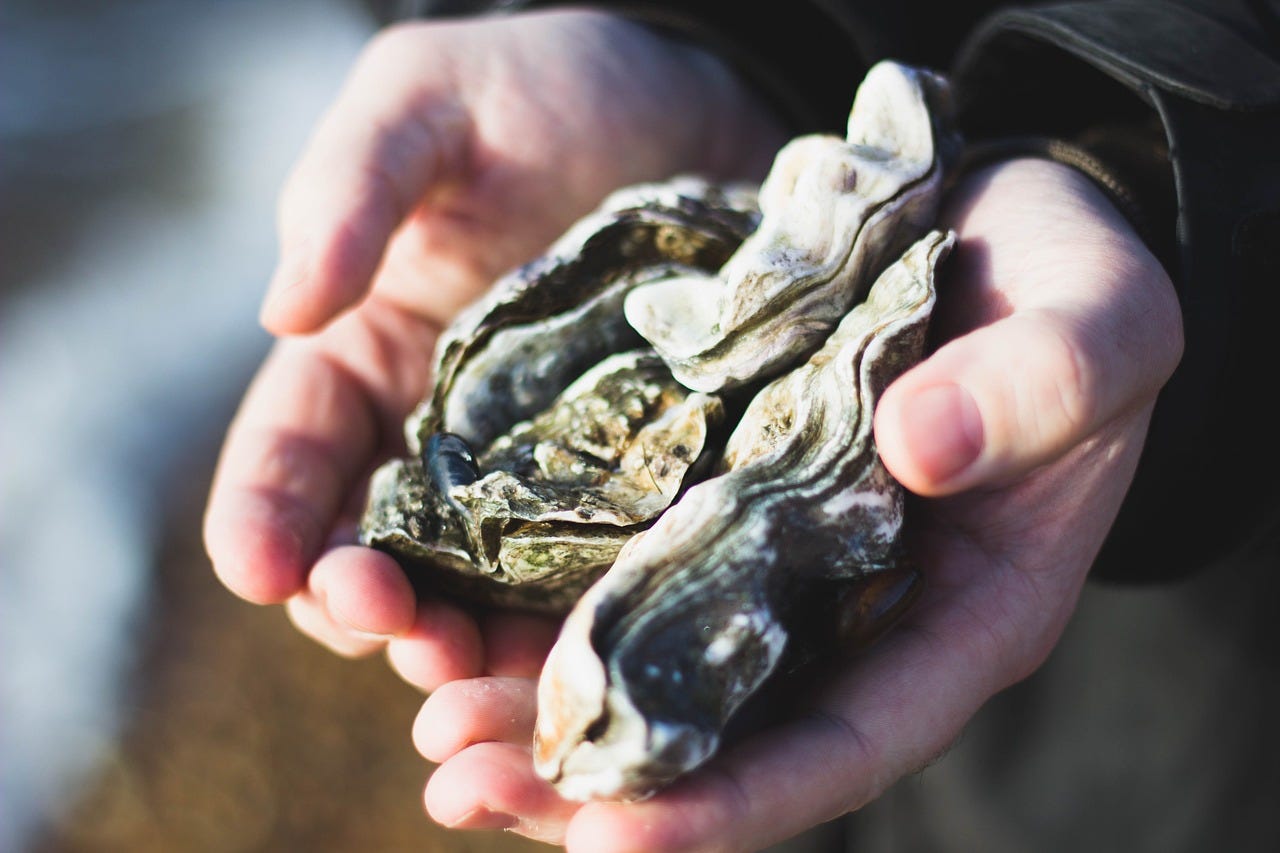
Calcarea Carbonica for Plants
Potency: 30C. Some also recommend 6X or 6C for baby plants.
In my experience, plants love Calc Carb. It is very supportive for plant growth in a general way, helping to build up the plant, especially if a plant has issues that seem structural, such as weak and floppy or undeveloped. Also well-known for helping to support fruit production. If a plant is struggling with growth in some aspect, a dose of Calc Carb often will often see it perk up in short order. You might even think of this as being towards a homeopathic fertilizer. Calc Carb and Silica are definitely foundational for plant health, in my experience.
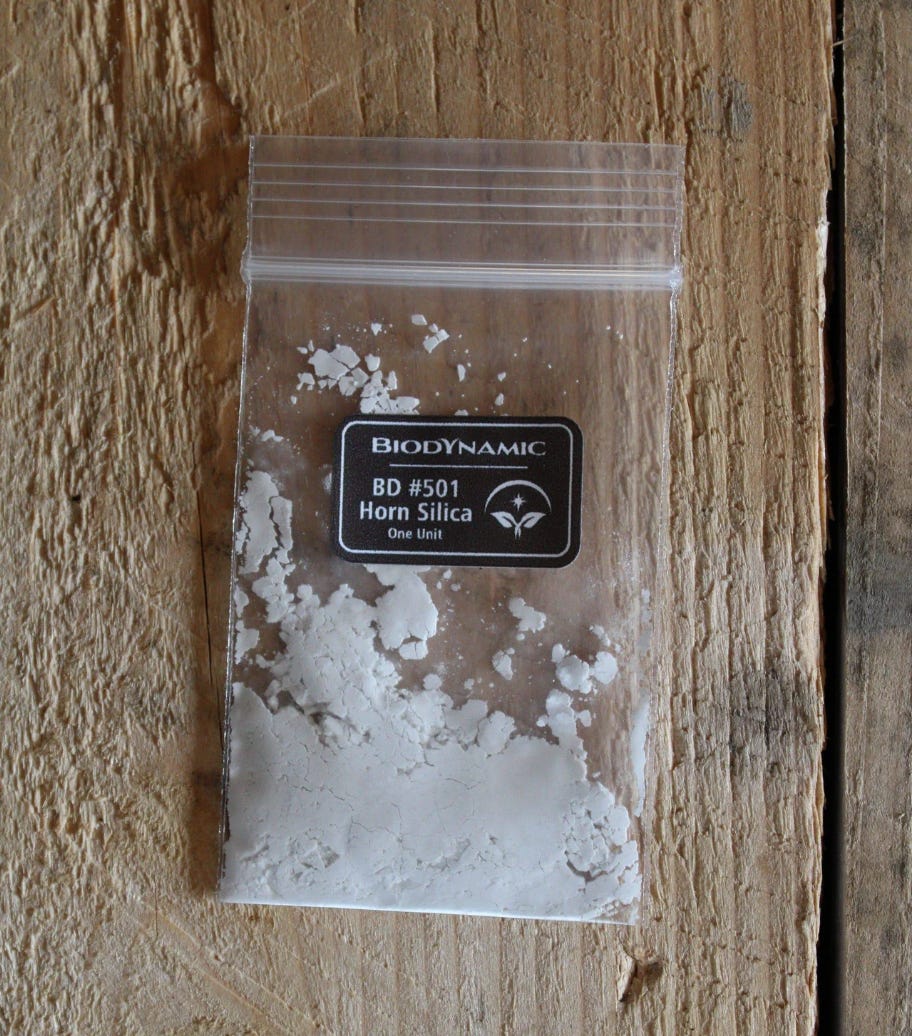
Silicea for Plants
Potency: 6X to 30C
This is key plant remedy. Considered a true polycrest of agriculture. No other has a deeper action or so wide a spectrum in plant care. Use when needed— but keep in mind that more is not necessarily better (you can go too far). There is profound and lasting action from even one application.
Consider Silicea for ‘want of grit’, weak, neglected, dry plants, dieback, transplant shock, and chlorosis. Tree cancers. All bark diseases. Makes timber and hardwood more dense. Protects against mildew and mold. Affects every stage of plant life. Also use as a general tonic and soil remedy. Can be applied at any stage. Plants treated with homeopathic silica grow more resistant to pests and infestations, and produce firmer and larger fruits.
Silica in homeopathic form also has shown some effects as an herbicide. Used on broad acre, spraying prevents seed formation in annual weeds. Apply two times within 10 days (or more) and then sow the desired crop with the last application (and it will help germination of the desired crop!).
Given after flowering, Silicea helps set the fruit.
Use Silicea and Calc Carb to ‘regain the desert’— to green desert lands. It is a wonderful remedy for yards and soils and the general landscape. Virtually every living thing can benefit from some silica.

Bioplasma for Plants
The 12 homeopathic ‘cell salts’ in 6C.
A reminder that cell salts are homeopathic medicines too. Just a category, also sometimes called ‘tissue salts’ or ‘mineral salts’, these basic constituents make up much of physical life forms, human and plant.
Many of the commonly recommended homeopathic remedies for plants that you find in books will be found in this category. And you might also say that with the cell salts we are getting into the fertilizer and nutrient category, in addition to whatever benefits come from the homeopathic potency.
The beautiful thing about giving nutrients such as calcium, iron, salts, potassium, phosphates, magnesium, silica, etc. in homeopathic form, is that the life form can use the ‘cell salts’ to create a balancing effect (too much iron, it will help with that— too little, it will help with that as well!). Versus adding crude calcium to the soil without knowing precisely what is needed and potentially causing imbalances that are then hard to rectify.
One of the easiest ways to support plant health is to occasionally give them the 12 cell salts. I like to give new plants a dose, along with Arnica and Calendula. Established plants probably get one dose a year, maybe two if they are younger and still establishing roots.
You can also use the cell salts individually, of course, but now you are getting into the territory of a lot of time and a lot of guesswork. (Which I don’t have time for!)
I have never seen a plant not do well with a dose of Bioplasma, which includes:
Calcarea Fluorica (Calcium Fluoride)
Calcarea Phosphorica (Calcium Phosphate)
Calcarea Sulphurica (Calcium Sulfate)
Ferrum Phosphoriucm (Iron Phosphate)
Kali Muriaticum (Potassium Chloride)
Kali Phosphoricum (Potassium Phosphate)
Kali Sulphuricum (Potassium Sulfate)
Magnesia Phosphorica (Magnesium Phosphate)
Natrum Muriaticum (Sodium Chloride)
Natrum Phosphoricum (Sodium Phosphate)
Natrum Sulphuricum (Sodium Sulfate)
Silicea (Silica)
Topical Homeopathic Skin Care
This is the full SPACH/SPPACHH article as a reference, but the details you need for plants follow below!
SPACH for Plants
Potency: 3X or 6X of each of the following remedies (or up to 200C)
You can find my full article on the uses of SPACH for humans just above or here. I know many of my readers are using it, as I hear great success stories on a regular basis. So, if you already have this made up, just note that this is also a great combo for plant care. The SPACH ingredients are the following:
Symphytum Officinalis (Comfrey)
Plantago Major
Arnica Montana
Calendula Officinalis
Hypericum Perforatum

‘Transplanting Super Combo’ for Plants
from Homoeopathy for Farm and Garden by Vaikunthanath Das Kaviraj
Potency: 6X to 200C (When in doubt 30C is a good bet.)
Arnica, Carbo Vegetabilis, Silicea, Calendula
The author uses these remedies for any transplanting of plants.
In addition to the others we have already discussed above, Carbo Veg is a great remedy for plants in its own right, and many have noted that it can bring plants back from the brink.
It can also help plants recover from toxic exposures— such as glyphosate. (Robin Murphy notes in his Materia Medica that charcoal is the best way to remove glyphosate from the human body. Carbo Veg is charcoal in homeopathic potency.)
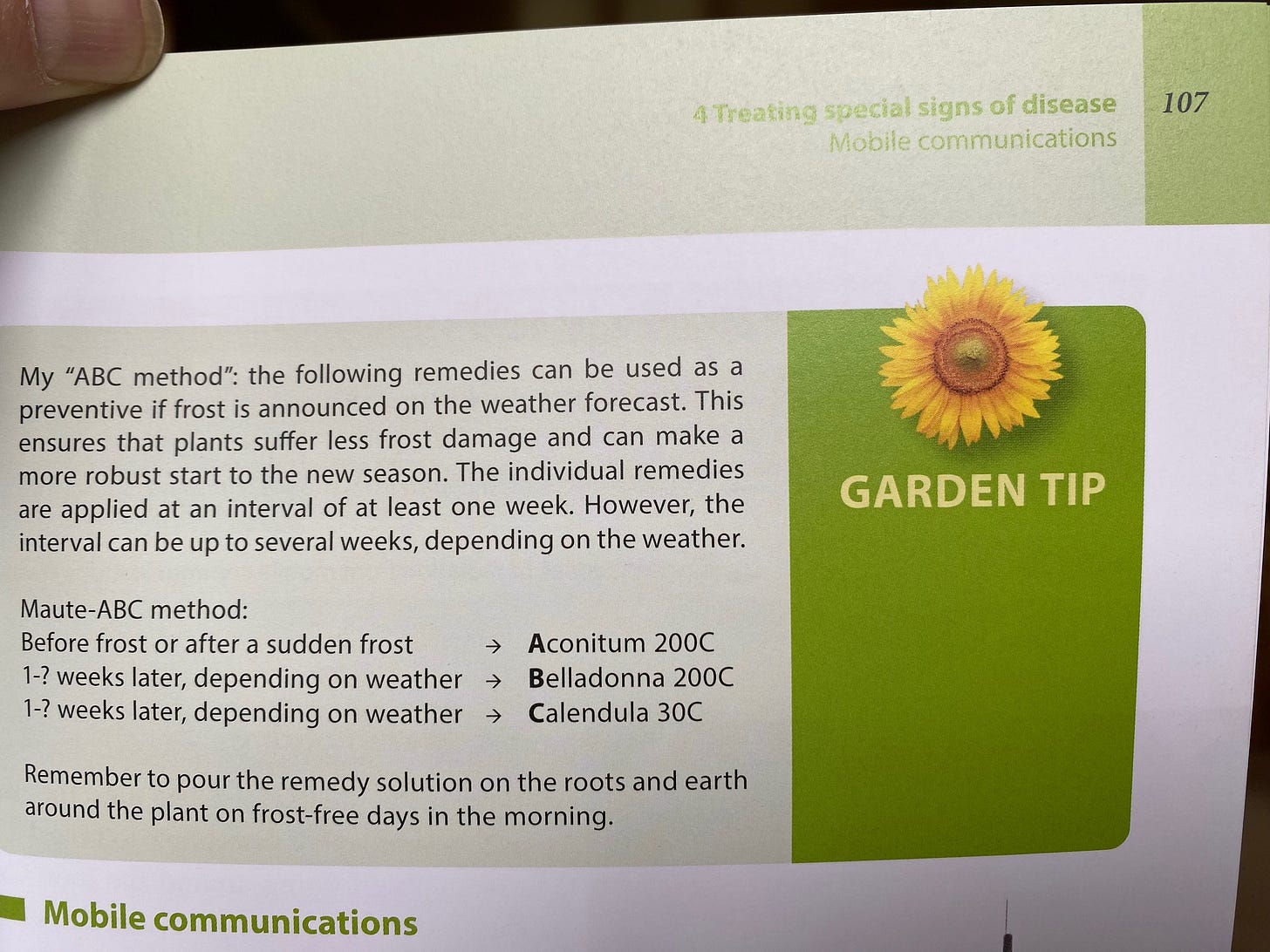
‘ABC’ for Plant Emergency Care
Aconitum 200C, Belladona 30C, Calendula 30C from Homeopathy for Plants
This was the first actual treatment of a tree that I experienced:
Each Fall we buy one or two new trees to add to our property. A few years ago, after planting a red maple, we had a late-spring cold snap.
The trees had already started to leaf, and looking out the window after the sudden heavy wet snow and cold, I could see our new little maple tree was in shock. The leaves were drooping and it looked very sad.
I used the ABC protocol from the book, giving Aconitum the first day, Belladonna the next day and Calendula the following day. Within those three days the tree totally revived— I could watch it perking up before my eyes. And it has been doing great ever since.
(Nowadays I would probably combine all three remedies, but the one a day method worked great too. As I have learned over the years, just about any way you choose to work with homeopathy, it will work with you!)
A quick note on the book: The ABC combo is very helpful, though I have not had much success with the rest. It probably would be a helpful resource for ‘real’ gardeners who know what the various pests and diseases are (from experience and by sight), and for those who work regularly with plants.
In my case, I have no clue what the different leaf spots might be, or what type of bug might be nibbling, so I go for the more broad approach to plant care. However, the book has tons and tons of details if you do happen to know your way around a garden.
These last two homeopathic combos are ones that I have given my potted plants, always with great success.
These two are common Banerji Protocol remedies that are found in many homeopathy plans (including ours and our cats’), and each time I have given these to plants it is very clear the next day that they love them.
Supportive Mix for Plant Growth:
Symphytum 200 + Calc Phos 6X + Calc Fluor 6X or 12X + Silicea 6X or 6C
Happy Plant Combo:
Hypericum 200 + Arsenicum Album 200 (HyperArs)
You can also apply specific remedies to plants using general common sense.
For example: Did your plant get burned?
Cantharis 30, plus Arnica and Calendula, might be a good place to start. The ABC combo could be another good approach as well.
In addition to giving plants homeopathic remedies, it is also very useful to consider the overall influences on the plants.
1) Mitigate radiation and toxic influences. Plants suffer from radiation exposures, just as we do. Orgonite is a wonderful support for plants and the environment.
(Which is a big discussion for another day, I will just say that we have transformed the environment in our area using orgonite, and plants thrive when supported by it. Orgonite is like homeopathy in that many who set out to ‘debunk’ it became some of its biggest supporters.)
2) Support the soil. The happier the soil, the more robust the plants, andthe fewer the pests and problems.
I hope none of you are still using Round Up and other toxic sprays. I know it’s tempting, but they are not a solution, and the downside is severe. There ARE solutions that work and that lead to robust health and balance.
It’s the slower approach, but not only does it last, over time, year by year, the entire ecosystem gets better and better. When we do it ‘right’, working WITH nature, it is so rewarding and beautiful. Just like with our personal health!
[As a side note: I am reading the book Silent Spring by Rachel Carson at the moment. I had some image implanted in my mind a long time ago that it was a book written by a hysterical hippie about the imagined dangers of DDT. :) Realizing now that almost everything I used to believe was a lie, I decided to read it. Of course it is a very sane, measured, even journalistic approach to exposing what man-made chemicals are doing to all life forms on our plants. Published in 1962, everything the author shares is more than relevant today. For instance her clear explanation about how everything we are doing ends up in the ground water is worth the price of the book alone. And which, of course, companies with financial stakes in these chemicals would never want to become common knowledge. If you need a kick in the butt to make some changes, check it out!]
Yes, it takes work to change to other methods. Mostly it’s a mental shift, just as we all undertook when moving from medications to homeopathy.
One of the most important things to keep weeds and pests at bay is truly healthy soil, which supports luxuriant growth of grass and desirable plants, which crowd out everything else.
The various sprays and chemical fertilizers used for plants are exactly like the drugs people take and the junk food people eat, which gradually deplete the baseline health and open the way for future problems.
As mentioned in my little intro article to this topic, Rudolf Steiner was a pioneer in what many would call ‘alternative solutions’. His teachings are the foundation of what we now know of as Biodynamic Farming. The topic is quite huge, but the basic principles at least are well worth considering whether you have a little garden patch or acres of agriculture.
For example, to make biodynamic fertilizer he would fill a cow horn with specific materials and bury it to be removed after a season and then ground up and added to soil. He also had specific procedures for Yarrow, Chamomile, Nettle/Urtica Urens, Oak Bark, Dandelion, Valerian and Horsetail. Which would then be incorporated in small doses in the manure mound to supply all the nutrients and elements in balance.
Note that Equisetum (the Horsetail) is made of up to 80% silica. Steiner prepared this as a tea for plants, but it can also be used in homeopathic form, preferably in a very low potency like 3X or 6X. Steiner used Equisetum Arvense. We homeopaths tend to have Equisteum Hyemale on hand.
We use homeopathic Equisetum for a variety of issues, but one is for hair growth. Like leaves for people. :) Discussed already, silica is a soil remedy of the first order, and this is a another way to incorporate it. Apply to bare ground and grass patches and also as noted above.
Steiner came up with these systems for fertilizing that were designed to supply everything that plants need to thrive. Granted, his methods are not easy to do yourself. Fortunately, many enterprising individuals use these Biodynamic Farming techniques and will sell you the results of their hard work. Here’s one place that you can buy Steiner’s Biodynamic Preparations.
Again, these methods take time. There are no quick fixes in health. Within the first few years you will begin to see results and they will compound from there.
Around my house, we don’t have a lot of time, and I haven’t put in a ton of effort. Just one or two steps a year. One year we put homeopathic silica in our irrigation tanks and sprayed the entire property with it. Another year we did the Biodynamic Fertilizer ‘Tea’. In the meantime we looked for weed solutions that could be spot applied and that were non-toxic to life. I also walk around and give our trees a few homeopathic waterings each year. Another year we made the dandelion ‘pepper’ (see below).
The more we have used all of these techniques over the past years, the more our property has become like a Disney movie. Green and peaceful with lots of wildlife.
We have had wounded animals come to recover on our property. One deer who was injured stayed close by for a few weeks, nestling down by the house. A fox that was injured slept under our spruce trees until he was ready to move on. The number and type of birds has exploded. Some mornings there are literally a hundred birds chattering in the trees,
There is a herd of elk that migrate through a corner of our property around Thanksgiving each year. (Photo at top of article.) The grass that was quite patchy when we moved here has mostly filled in and we regularly have comments on how healthy our trees look. Not only that, the SMELL of our property is so gorgeous, so fresh and alive. It’s like the experience in the movie, The Biggest Little Farm, but without being a full-time job!
Electroculture for plants is also a very interesting way to support plants and to speed their growth. Here are a couple of introductory videos:
Before moving on to specific homeopathic plant treatments for plants and pests, I will add that using homeopathy benefits the soil.
When we bought our property, there was a maple tree that had been damaged terribly by deer that we decided to replace.
That Fall we replaced it with a honey locust tree. But this tree didn’t do well. As it turned out, we are located just a bit too high altitude for this type of tree to thrive. In the Spring my husband cut it way back and I gave it a great many homeopathic remedies, in rotation, for an entire summer.
I would have kept working with it, as the tree had started to send out happy new shoots, but my husband didn’t want to wait the years it would probably have taken to become an actual tree again. (And it had really struggled with the winter exposure at our altitude.) So that Fall we replaced the tree in this location, yet again.
As my husband was working on digging it out to put in a new maple tree we had purchased, he came to get me in order to show me the soil where he had just removed the honey locust tree.
The number of earthworms in that area was out of this world! The soil was absolutely alive. And it definitely hadn’t been the first time he had replaced the tree in this location. The only difference? A lot of homeopathy watered into this spot on a regular basis.
We also bought another new tree at the same time, for a brand new location, and my husband dug a hole about 30 feet away from this earthworm spot. The soil in the new hole was hard and dry and not at all hospitable compared to the area that had been dosed repeatedly with homeopathic remedies for many months.
Now, for the more ‘serious’ gardeners or farmers, and for when something is beyond the scope of the general homeopathic approach. Let’s get into some remedies for specific plant pests and diseases.
Homeopathy to Repel Pests and for Specific Plant Diseases
Usually a potency between 6X and 30C is a good way to go. Give a dose, and observe. Yes, you can repeat, but with plants it isn’t usually necessary to do so day after day. If you need to give daily doses, then consider rotating your top remedy selections.
I put between 5 and 10 pellets of each homeopathic medicine that I want to apply into my three gallon watering can or backpack sprayer. (The amounts depend on whether I’m just doing general supportive dosing or if there is a problem.) I let the pellets dissolve and apply to the plant(s).
Use the following list for starter ideas, and once you get the principles, you can expand upon this on your own.
Companion plants in homeopathic potency can be used in place of actually planting the companion plant, with the same benefits! (See basil below.)
Consider what the natural predator to your pest might be (such as lady bugs to aphids) and use that predator prepared in homeopathic form.
Look up online to find the natural predators and repellents for a particular pest, then mix those up in a homeopathic spray and apply where the pests are.
Some of the following might even make a great natural mosquito repellent for people… or flea control for animals… my mind runs with the possibilities, too many to ever test!
Allium Cepa (Onion)- Prevents onion fly, carrot fly, weevils. The onion smells can also repel small rodents. (Consider also Allium Sativum, garlic in homeopathic form, as a general deterrent to many pests. No, you can’t smell it, but they can!)
Aranea Diadema (Garden Spider)- In homeopathic form this spider keeps away flies, mosquitos, locusts, moths and other small insects.
Arsenicum Album- Try as an ant control spray. (With ants it often helps to wipe away their trails too.) A useful healing remedy as well, see HyperArs above.
Belladonna- Think of belladonna for anything red or reddish/brown. In addition to the healing benefits. (See the ABC treatment above.)
Bombyx Processionea (Procession Moth)- Keep caterpillars away naturally.
Bovista- Repels spider mites.
Coccinella Septempunctata (Common Ladybug)- Natural aphid prevention.
Calendula- Repels asparagus beetles. Prevents nematodes. Promotes root growth and plant health in general. (See more above.)
Camphora- Prevents deer from eating plants and crops (also see Sulphur). Gets rid of termites, ants, aphids, moths. (Probably also spiders, and many other pests too.)
Coriandrum Sativum (Coriander)- Repels aphids.
Cuprum Metallicum (Copper)- Homeopathic treatment for powdery, downy mildews, brown rot, leaf rot, blights, cedar rust, viruses. Fungal infections after lengthy periods of cold weather and rain. General pest control on vegetables. Prevents many insects in general. Striped beetles on squashes and cucumbers. Promotes growth of fruit trees.
Eucalyptus- Excellent natural pest repellent. The essential oil effectively repels and even kills a variety of garden pests such as aphids, white flies, and spider mites. Repels earwigs. (Use it in homeopathic form too, of course.)
Ferrum Phosphoricum- Blights. Plant first aid. Pale and sickly plants. Repels earwigs. (Also considered a ‘cell salt’, see above.)
Gratiola (Hyssop)- Prevents all pests and diseases of grapevines. (This is a grape companion plant in viticulture.)
Helix Tosta (Roman snail- tosta means dead/burnt, see more on this below)- Get rid of snails and slugs naturally.
Lactic Acid- Bactericide in plants. Control of mildew, mosaic virus.
Manganum Aceticum- Monilia/Candida, chlorosis, molds, mildews, spots, stripes, blotches, blights, wilting, mottled/speckled yellow leaves. Consider using with Silicea for best effect.
Mentha Piperita (Peppermint)- Cruciferous pest control. Repels ants, fleas, beetles, mosquitos, gnats, cabbage fly, caterpillars, also mice, rats, spiders. All around great natural repellent.
Neem- A premier organic insecticide in oil form, it’s a premier bug repellent in homeopathic form without the hassle of the oil. Consider it as a general preventative and also try it for the tough ones such as Japanese beetles and mosquitos.
Pine Bark Beetle- For pine bark beetle prevention or treatment.
Phosphorus- Get rid of fruit flies. Lead poisoning of plants (such as on the sides of roads).
Ocymum Basilicum (Basil)- Premier for tomatoes, their natural companion plant. Sprayed on tomatoes (in homeopathic form) this protects them against all pests and diseases and improves the flavor of the tomatoes.
Oniscus Asellus (Common Woodlouse)- Prevents slaters/woodlice/roly poly bugs/pill bugs/sow bugs, cellar worms.
Petroleum- Fungal gnats, scale of all types, scale insects, mealy bugs. Dry, cracked plants. Particularly well suited to succulents and orchids.
Ricinus (Castor Oil)- Vermifuge (expels worms of many types). Prevents all pests and diseases on grapevines (another companion plant in viticulture).
Salvia Officinalis (Sage)- Cruciferous pest control. Mites, moths, aphids, cabbage fly, carrot fly, and even some weed control. Protects vine crops (such as melon, cucumber, squash etc) from pests and diseases.
Sambucus Nigra (Elder flower, which has an odor that is unpleasant to most insects)- General insect repellant, especially caterpillar, various types of worms, flies, moths and aphids.
Satureia Hortensis (Savory)- Protects against all diseases and pests of beans (their companion plant). Mexican bean beetle. General insect repellant. (In addition to the other link, Ainsworths.com also carries this one in homeopathic form.)
Secale (Ergot)- To prevent and treat ergot on all species of grains and grasses.
Sulphur- Considered by some to be the greatest remedy for eruptions; rusts, blotches, spots, galls, blights, mildew, molds, stripes, leatherleaf, molds, rots (both dry and slimy). Repels many pests; moths, flies, mites, beetles, root nematodes. Prevents deer from eating plants. Try for insect infestations of any type. A powerful antiseptic. Helps plants recover from herbicide damage and ailments from heavy metal poisonings of all types. Sulphur may be called for when acute diseases do not clear up completely. (The same with humans!)
Tabacum- In crude form, tobacco smoke sprayed over plants is a powerful insecticide and it kills parasites. (It was also used for head lice!) Try in homeopathic form to repel many types of insects, pests, worms, and parasites.
Tagetes (Marigold)- A useful companion plant found in many gardens. In homeopathic form it repels nematodes, white flies, aphids and anything else that marigolds in the garden would help to keep away.
Tanacetum Vulgare (Tansy)- Repels flies, worms of any type, Japanese beetles (peach trees especially), ants, moths, fleas, black vine weevil, nematodes. Prevents premature fruit drop. (Note: Tanacetum oil contains santonin, which was used to treat worm infestations in people.)
Teucrium Marum (Thyme)- Protects against threadworm, cabbage root fly, moths. Helps with many types of parasites. ‘There is no better remedy for nematodes.’ (For best results use Calendula as well for nematodes.) Flowering and fruit setting problems.
Thuja- Pests in general. Spider mites, moths, scale, gourd pests, many types of borers, ants, bacteria and virus attacks, hard or soft galls, fungus gall, fungal diseases. ‘Sycosis’ miasm— deformed, overgrowths, warts, cancerous growths, cancer in trees, leaf curl, brown rot. Thuja oil has also been used as a powerful insecticide.
We have a box elder tree that was struggling one year with dry and mottled leaves, lumps in the branches, and some kind of scaly bark patches. Thuja 30C plus Calc Carb 30C applied a few times over the summer completely turned things around.
Urea- Urine has been used as an insecticide since ancient times. Tiger’s urine in homeopathic form is an excellent repellent for all types of unwanted animal visitors, including feral cats and voles.
Ustilago (Corn smut)- For all types of smuts, bunt, head scabs. Protects many types of grains.
Valeriana- Has a peculiar smell which repels insects on man, plant and animal. Helpful with molds in general, nematodes, banana rust thrips. Attracts earthworms. Can be used on all plants. One of Steiner’s balancing elements (see above).
Viburnum- General insect repellent. Can prevent dropping of fruit if applied at first sign.
Zincum Metallicum- Scabs (potato, apple, citrus, glumes, powdery, violet and pansy), rhizoctonia, turf and root nematodes. Zinc deficiency symptoms.
For more, you can check out this online Materia Medica and Repertory for Agrohomeopathy: https://considera.org/preparations/materia-medica
This list is not meant to be exhaustive, but to share tested homeopathic medicines that cover the broad spectrum of plant problems. For more detailed options consider these two books, already mentioned above.
Again, we can get very specific, or we can take a more broad ‘shotgun’ approach, at least to start. As you may have noted, many of the remedies above cover a lot of things at once.
General Repellents for Insects and Pests of All Sizes
Many creatures large and small do not like smells such as mint, which act as natural repellents. Even in homeopathic form, these animals will steer clear. We can’t smell it, but they can! (Applying these in homeopathic form also last longer than essential oils.)
Essential oils by themselves also make some great natural repellents. The second summer in our current house found droves of earwigs showing up indoors. Yikes!
By this time I was branching out into trying homeopathy for everything. According to my research, bayleaf was a great deterrent to earwigs. So I sprayed homeopathic bayleaf in and outside our house. Before long we had a great many spiders showing up! (Apparently spiders eat earwigs, which is great, but I would choose earwigs over spiders in my living space any day!)
So not knowing exactly how the homeopathy will act in order to control the pests, in our living space I stick to essential oils. ;)
For example:
Our front door has a little gap at the bottom edge where I can see daylight. (And this is not easy to rectify.) When the weather turns warm I have watched bugs walk right in. But if I take a little essential oil on my finger and wipe it along the door jamb once a week, we get virtually no bugs inside the house.
I do this light swipe around the base of all the door jams, and I sprinkle a little down all the shower drains once a week, just during the summer months, and our house stays 99% bug-free.
Which essential oil do I use? Anything that smells strong— peppermint, rosemary, eucalyptus, etc. I bought some essential oil combos that were on sale after Christmas and they have all all sorts of things in them. So far all have worked equally well.
Now, if I wanted to keep insects and pests away from the garden, I would probably start with a general homeopathic spray mix, all in 30C or lower.
For example homeopathic Mint, Sage, Thyme, Savory, and Sambucus would probably cover a good 90% of the categories without causing any issues. A mix like this would also deter the neighbor’s cats, and mice, and all sorts of creatures.
You can look through the options and come up with your own combos!
One question that comes up is whether this type of spraying outdoors affects the wildlife we DO want. And in my experience not at all. If I spray a new homeopathic mix outside, I can tell my cats notice it when freshly applied on the property. They might walk outside and pause to sniff the air. But it doesn’t freak them out or repel them.
The one thing that is still pesky around here are the voles. Although year by year we get more and more natural predators hanging around— since last year we are hearing owls on our roof at night, there’s a red-tailed hawk that perches atop one of our spruces to hunt most mornings, foxes can be seen hunting in the field nearby, and recently I saw the first weasel in the area— the voles still like to tunnel under trees and, if unattended, they eat the roots which could ultimately kill them.
We have used a product called VoleScram, which is natural and helpful. It uses essential oils. But last year there was as aspen tree that the voles had burrowed under, and nothing was helping to get them to move out. So I did some research as to what are natural predators to voles and what plants they don’t like…
Then I ordered the homeopathic remedies from Helios and made the following mix. (One spray around the area and the voles stay away for 3-6 months, depending on the season.)
My Homeopathic Vole Repellent-
Canis Latrans 30C (Coyote Fur)
Feline Hair 30C (Cat Hair)
Meles Meles 6C (Badger)
Raccoon Fur 30C
Sanguis Vulpis 6C (Fox Blood)
Tiger’s Urine 30C
Sulphur 6C or 30C
Camphora 30C
As another example, here’s a suggested list I came up with for friend—
Homeopathic Cockroach Repellent
Peppermint, Coffee, Citrus, Catnip, Neem, Tea Tree, Clove, Garlic, Sulphur
I would get all of these in homeopathic form in a 6C or 30C.
Using Insect and Pest ‘Nosodes’
If you want to take this to the next level, you can consider making and using ‘nosodes’. Just as we use the exact disease matter in homeopathic form to treat a disease, we can do the same with weeds, insects and larger pests.
I put ‘nosode’ in quotes though. If it’s actual plant disease, like a growth, then that is a true nosode. But is a worm or a flea a disease? I suppose it depends on if you have an infestation of them! More accurately we might say like-cures-like, or exact can repel exact. (However, with homeopathy for plants and pests it can also sometimes attract, more on what to do about this below.)
Here’s an excerpt about using nematodes in homeopathic form:
"The nematode (roundworm) Meloidogyne enterolobii is an emerging threat to food crops globally, with infestations reducing yields. Homeopathic medicines made from disease-causing substances are known as ‘nosodes.’ A recent study showed that a nosode made from these parasitic worms may protect inoculated lettuces without harming plant growth. The study, published by researchers from the Departments of Agricultural Engineering, Entomology, and Plant Pathology, at a Brazilian University, investigated the effects of homeopathically-prepared Meloidogyne enterolobii on healthy greenhouse cultivated lettuce plants and those inoculated with juvenile roundworms.
The study found that daily irrigation of plants with the homeopathic nosode reduced worm reproduction by about 30% when applied as a 6cH, 18cH, or 30cH preparation, but this effect was reversed at 42cH. The treatment also had a positive impact on fresh root weight and volume. Notable strengths of the study were randomization and blinding of treatment with extensive controls. Further laboratory tests of nosode-pathogen interactions would be beneficial to expand our understanding of agricultural applications for homeopathy.”
-via the Homeopathy Research Institute
Referring back to Steiner again (he came up with some very interesting methods), I have come to see the value of using whatever living creature we are trying to get rid of in the ‘tosta’ form. Which means dead and burnt.
To use the regular form may sometimes attract more of we are trying to get rid of. For example, a friend was trying everything for her dog with fleas. At one point she also tested homeopathic flea (Pulex Irritans) but ended up with more fleas, not fewer!
Quite a few times in the ‘agrohomeopathy’ literature, I have seem statements about not using a nosode too often, or else it may backfire and go the other way.
However, this is not true of the tosta form, where the signal being sent is not of the living form, but the dead one.
From Steiner’s Agriculture Course Lecture 6 we find some very interesting information on how to get rid of weeds, insects and animal pests, without any chemicals, using a method that can take care of even large areas quite permanently.
How about dandelions as a weed, for example? Or the case of the estate with the rabbit infestation, which I shared with you all in the brief article that introduced this method. (You should read it, if you haven’t yet.)
Steiner’s Agriculture Course was given in 1924 and the language can be quite dense. So I will give you the translation and most important bits below.
‘Thus, just as on the one hand water is a promoter of fruitfulness, so on the other hand fire is the destroyer of fruitfulness. It consumes it. And if instead of treating plants with water, which is the usual way of making them fruitful, you treat them with fire applied in an appropriate manner, then you are performing within the economy of Nature an act of annihilation.’ - Rudolf Steiner
Natural Weed Control- Making Weed ‘Pepper’
-We collect a number of seeds of the particular weed in question.
-We burn the seeds, carefully collecting the ash. There won’t be much, but you don’t need much.
-In the ashes of these seeds we have, in concentrated form, the force that is the opposite of the force which was developed [in the plant].
-We then sprinkle the pepper-like preparation on our fields.
-We need not be very careful about it, for the influence spreads over a large area — and we shall see in the second year that there are far fewer of the weeds in question.
-After four years of this treatment, the weed will have completely disappeared from our field.
-This can be done at any time of year.
I have used the above method for dandelions, which, here in Colorado, can completely take over the land.
We collected about half a five-gallon bucket of dandelions puffs (the seeds with some attached parts, nothing too exact), and roasted them in the bucket with a propane gas torch until they were black and completely toasted.
I then walked around our acre sprinkling the ‘pepper’ and letting the wind catch some to carry to our neighbor’s properties and the open space that adjoins our land.
We have not repeated it every year, and yet, combined with our other natural methods, each year there have been far fewer dandelions, and this despite the fact that our neighbors still have a lot (and spray for them). If we did the whole neighborhood, I suspect the results would be amazing, but in the meantime, the number we get now is easily managed by hand (10-15 minutes here and there in the Spring to uproot the dandelions that do pop up.)
I am very interested in experimenting with taking the above preparation into homeopathic potency. ‘Taraxacum Tosta’ (Burnt Dandelion) could be a much easier way for us all to use this method. (What a great business for someone to start up, please!)
Natural Insect Control- Making Insect ‘Pepper’
-In this case the whole insect must be taken and burnt. That is the best and quickest method.
-The incineration must take place when the Sun is in Taurus. In 2025 the dates are May 15 to June 11th.
(I realize that this may sound a bit kooky or witchy or pagan; however, it is explained that this was tested, and time of year was found to be very important for the effectiveness with insects and animals. Although the full explanation seems beyond the scope of this article, I wouldn’t want you to kill something and go all the effort and then have it not work, just because an important piece was missing!)
-Then scatter the insect-pepper in the area(s) where you don’t want the insects.
In the example Steiner uses, he scatters a nematode insect pepper over a field of turnips and says the nematodes will gradually, become “faint.” After the fourth year, they will have completely faded away. They cannot live — they shun life if they are to inhabit a soil that has been “peppered” in this way.
Again, I’d love to try this with a homeopathic potencies of insects ‘tosta’. I know someone getting ready to try this now with cockroach (Blatta Tosta!), so we will keep learning more.
Natural Animal Pest Control- Making Pest ‘Pepper’
-Catch the animal when it is fairly young, kill it and skin it.
-The main thing is to do this when Venus is in the sign Scorpio.* In 2025 this is November 26 - December 17th.
-The skin is then burned and the ash and any residue carefully collected. (Usually several skins must be burnt to procure a sufficient quantity of ash.)
-You now have the negative power to the power of reproduction of the field-mouse (or whatever creature you are working with).
-Sprinkle on your fields or around your house and it will keep the pest animal away.
-‘No doubt they are cheeky little creatures and are apt to come back again if “pepperless” areas still remain in the neighborhood. In such areas, the mice will again settle down. But if the method is applied throughout the neighborhood, it certainly brings about a radical result.’
*I take it from Steiner’s notes that possibly the homeopathic potency would make it not as necessary to do the treatment at a certain time of year. It might still be necessary to catch and kill the animal at the right time. But if the pepper was then made into a homeopathic medicine, I suspect it would be preserved forever to be used as needed.
For example we have Helix Tosta (burnt snail) as a homeopathic remedy that people use with success to naturally get rid of snails and slugs. And I have never heard any talk about a specific time of year being important.
It is unlikely I will kill any rodents or other animals to try this(!), but I would like to hear the results if anyone does. Personally, I would (and do) use repellents instead, such as tiger’s urine, mint and other things they don’t like, as I shared in my homeopathic vole repellent mix above. However, I do suspect that if I was willing to do this with a vole, that it would have a more profound effect.
What to do about all the chemicals and heavy metals that have made their way into our soils, and the forces that, in some areas, are killing off large swaths of plant and animal life? I believe homeopathy is one of the keys to restoration and healing of the damage that has been done.
I also have a great many interesting notes on homeopathy for farm animal care that I plan to share one of these days.
And in the next article I plan to write about antidoting past drugs used in order to clear the way for healing, and I’m sure that we can use the same principles for plants. If we know the toxin the plant was exposed to, we can apply it in homeopathic form to antidote the effects.
I find this topic of homeopathy for plants and pests to be extremely interesting, with many depths yet to be explored. I hinted at it a little today, but in the future will write more about homeopathy and care of the environment at large.
[The first year in our current home, the irrigation ditch water was dry by the beginning of July. Last year we had water for irrigation until we had to winterize the system in October. Each year better and better. This area, that was considered to be in drought, has been getting wonderful regular precipitation year-round for the last few years. It might sound crazy, but this is not random. ;)]
As a quick summary- Start with the general and broad approach, using the common homeopathic remedies for plants. Make a repellent mix. Then, only if needed, you can get into the more advanced methods of using homeopathy for plants and pests.
Normally the comments section is only open to paid subscribers, but for this article I am going to leave the comments section open for anyone who wants to ask questions or to kindly contribute homeopathic remedies and other successes they have had in the natural management of plants and pests.
Where do I buy these substances in homeopathic form? I provided links for the rare items above, and the rest you can get from Helios Homeopathic Pharmacy, if not somewhere closer to home.
Thank you for reading and subscribing! Until next time.
All support — reading, sharing and financial — is deeply appreciated.
Find the Homeopathy Rising subscriber chat here.
Follow Homeopathy Rising on X.
Typically I post the same content on X as I do to Substack Notes, so you can also follow me on Substack Notes. (Which is different than these articles.)
And here’s the Homeopathy Rising archive so you can find all past articles, which build from the most basic to much more advanced topics related to homeopathy.






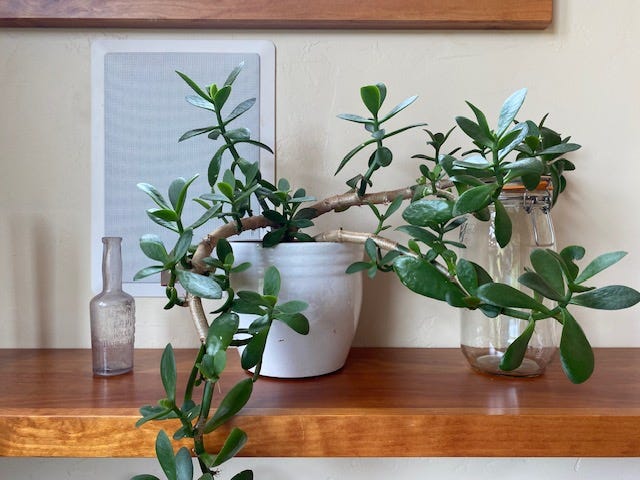
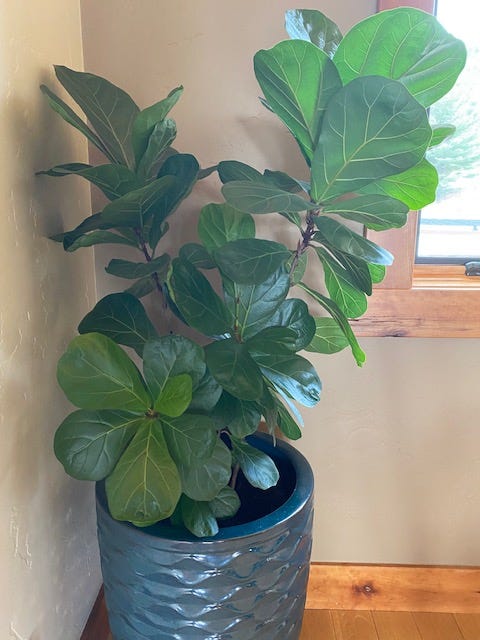
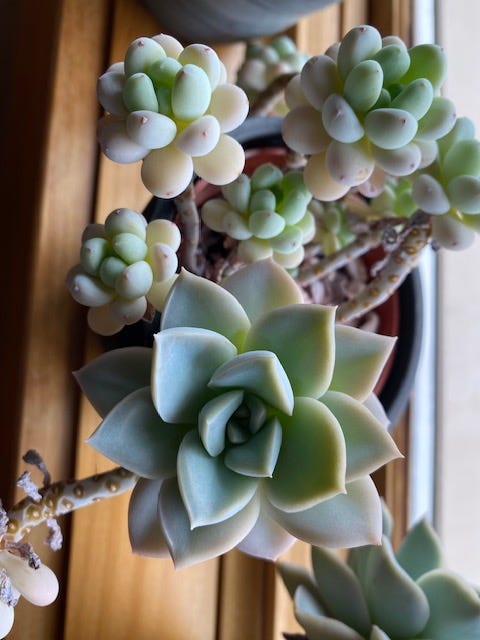
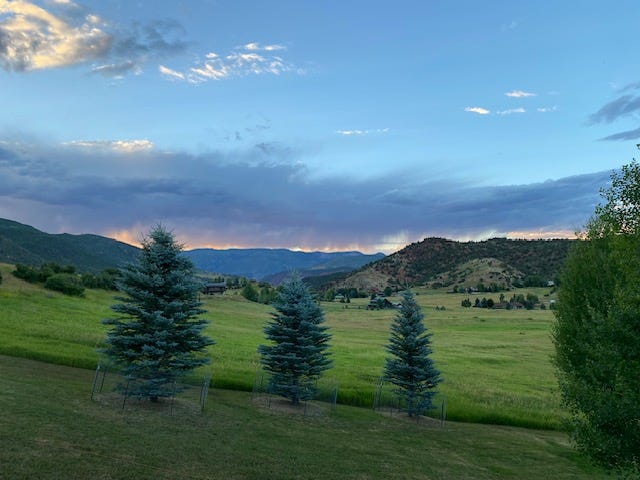



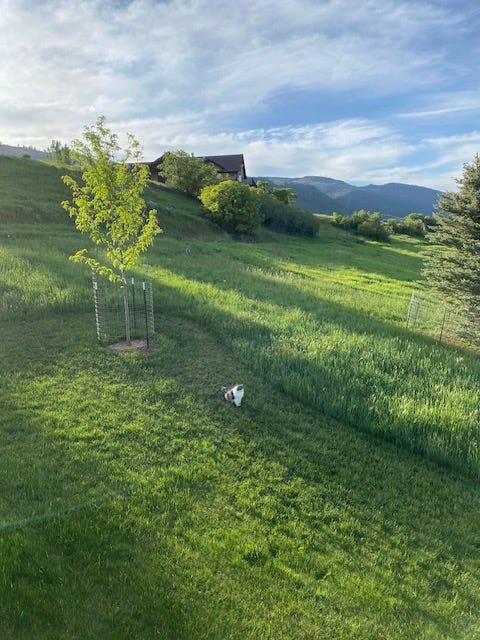
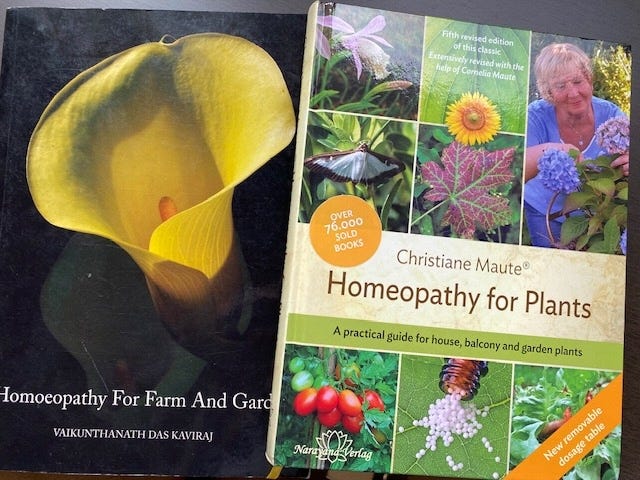
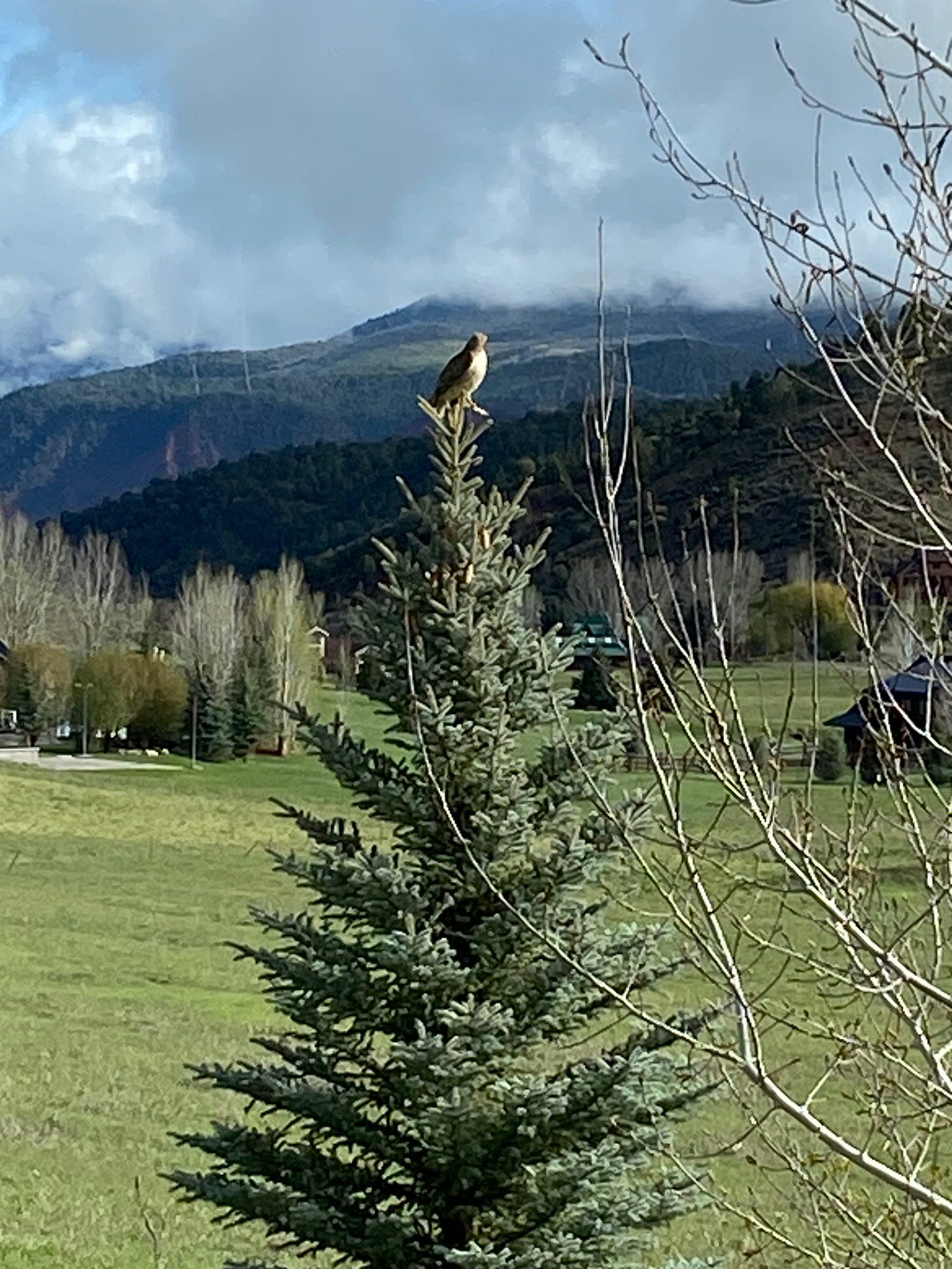
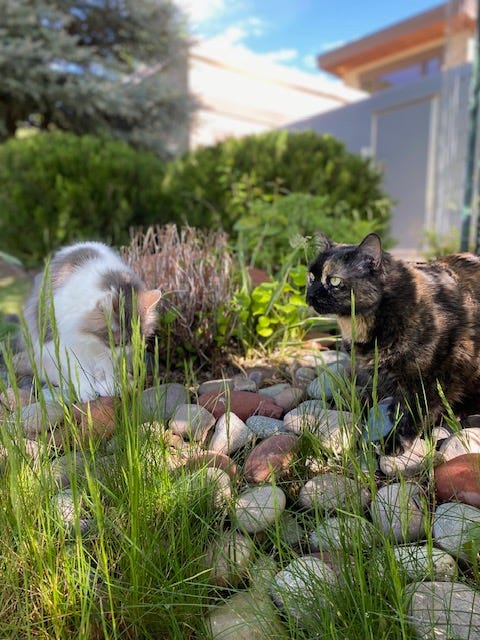
Years ago I read in a chat group a suggestion that Staphysagria 6X taken 30 minutes before going out will protect against mosquitoes.
This weekend I took it to see if it would protect me from grass ticks. I spent all weekend in the garden and didn't get bitten! They have been so bad this year I've not enjoyed walking around the garden.
What a fantastic post! I have both the books you recommend and have used homeopathy for plants for a few years now with some success, as follows:
Helix tosta really works! When we could still grow cabbages and other such plants, slugs could be such a problem, but not with Helix tosta. People have all kinds of solutions they propose for slugs and snails, but Helix works the best.
We have a lovely heirloom rose bush that we grew as a slip from a bush that belonged to my husband's grandmother, who died in 2003 just a few weeks short of her 100th birthday. It's a cabbage or Damascus rose, and I have heard that the rose was brought back from Syria originally by the crusaders. When we first started it on our current property, it quickly became overrun with Japanese beetles. I watered it with Sulphur. We've never had a problem since. It is very large now and is currently blooming prolifically. Just a couple days ago, we saw that it has some little pests going on it, and I am set to apply Sulphur again. I haven't done it for six or seven years. Roses in general love Sulphur, I understand.
I start our peppers and tomatoes indoors early, in February and March, planting the seeds in small cells and then transplanting them into bigger pots (some of which we then sell). When I transplant, I water with Aconite. The little plants never seem to know they've been moved when I do that.
Some people maintain that fruits and vegetables taste better when they're homeopathically treated. All I know is that I've heard people say that we have the best tomatoes in Washington County. I always figured it was because we use heirloom varieties and grow them completely without chemical fertilizers/sprays/pesticides, but who knows?
Do you know if Vespa will deter wasps? I suppose it's worth a try. I don't fancy trying to catch them, kill them, and burn them! But they were terrible last year, and I got stung many times (of course a couple of doses of Apis stops the pain in just a few minutes and pretty much takes care of the swelling--but I didn't manage to find a remedy to control the subsequent itching).
There is a marvelous product from Germany called Earth Harmony. The company will not share what is in it, but it's homeopathic. Its effect on plants is truly amazing in terms of fertility for the plant--lots of flowers/fruits--but, as of last year, Germany was refusing to ship this product to the USA any longer. I am so disappointed about this. I tried to get Helios to sell the product and ship it to me but so far without success.
I look forward to more success with agrohomeopathy, and I so much appreciate your publishing this article! Thank you!